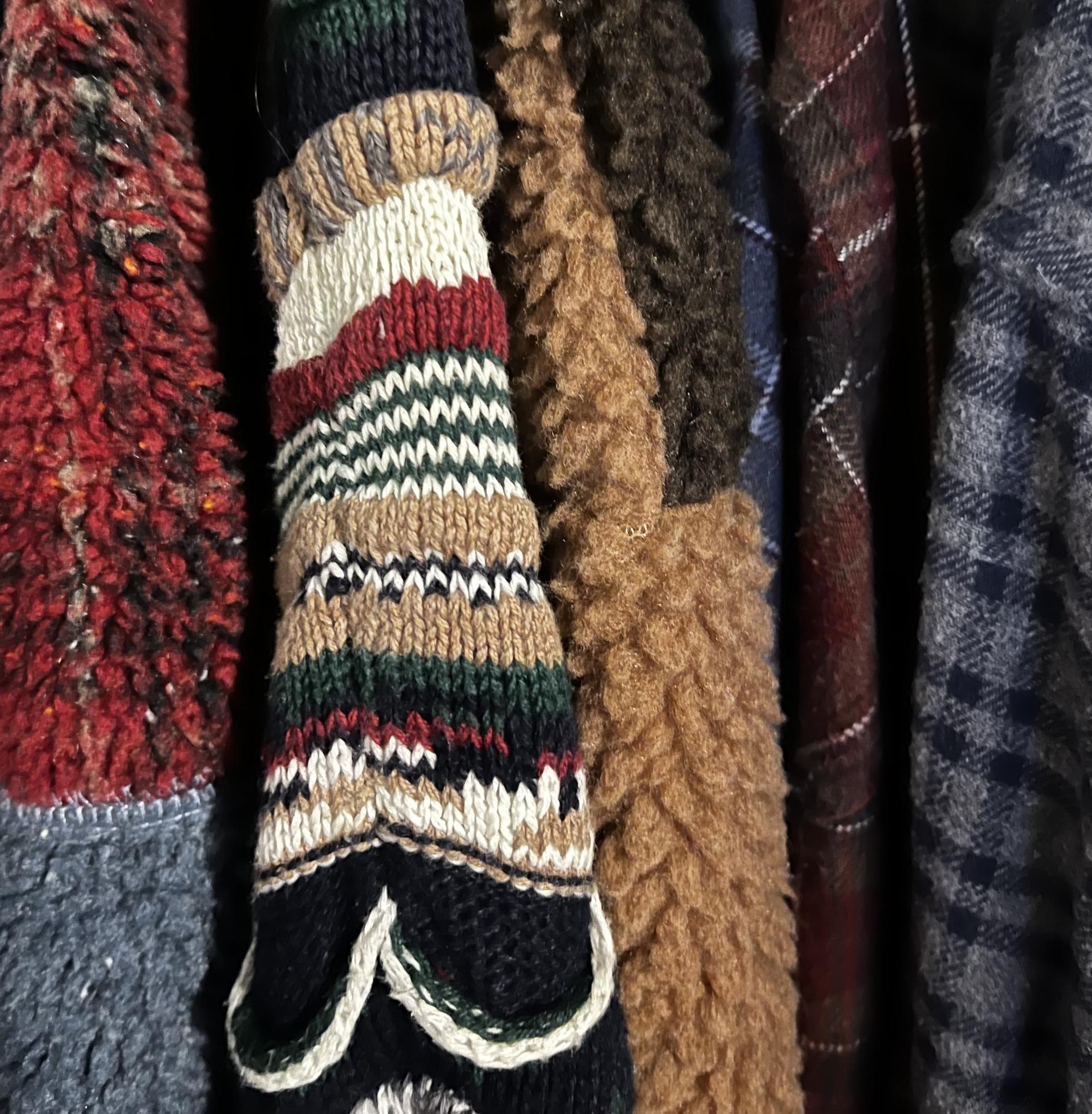With the amount of (blissful) washed-up Northern alumni rebranding a previously fashionably conservative town in the U.P., there comes some aesthetic territory to be conquered by the current and following generations. Walking into Contrast Coffee, for instance, you might feel insecure at the refined ruggedness of it all– Carhartt beanies, designer boots, vintage wool sweaters– all survival-essential relics of the Upper Peninsula’s past, refurbished into chic statements that emulate utility. Where are they getting these beautiful clothes? Between the boutiques downtown and the numerous thrift stores, it’s no mystery.
It might seem advantageous to try to fit in with this specific fashion trend that has manifested in Marquette, but the purpose of this article is to inform you of what’s called a “reseller thrifter” and how not to give into its cycle of apparel gentrification to mitigate “granola envy.”
The app Depop allows people to sell old clothes or trinkets online, like eBay, but is more textile-specific and sorted by aesthetics. It’s the world’s most diverse and fanciest thrift store, where you can find ratty t-shirts to designer vintage Coogi sweaters and Doc Martens for hundreds of dollars. Sellers often have pages of rare or “valuable” pieces with no shortage or supply. Where do they get them all from? They get them from their local thrift stores.
The point of a thrift store is to both be sustainable by encouraging donation rather than the disposal of clothing and to provide accessibility to all economic classes by providing inexpensive options. In Marquette, there’s a Goodwill, a Salvation Army and a St. Vincent de Paul’s. Marquette’s resale stores like 906 Restyle and Fancy-free, on the other hand, sell curated clothes and items that support local businesses and artists, like crocheted hats. These retailers are different from both thrift stores and Depop sellers because their clothes are received directly from the people who are selling/donating them to preserve the value of higher quality products.
An online thrift reseller is someone who purchases clothing for a low cost and resells it online at an inflated cost. When Depop resellers find a cool sweater for $3 that somebody donated after their grandpa died and sell it for $50 online, this is a reverse Robin Hood situation. The reseller is taking an accessible item and making it inaccessible, creating scarcity among the poor and abundance among the rich directly from a place with the opposite purpose. There is a class divide in fashion because some can afford to shop for aesthetics while others can only afford to shop for necessities. If the reseller had not bought the sweater from St. Vincent de Paul’s, someone who is limited to only shopping there for clothes would have bought it for its warmth and not its style.
This is not to say that you can’t go to your local thrift store and buy the sweater even though you can afford a new one, similar to how it’s okay to burn music off of music streaming services for personal use as long as you aren’t selling CDs or cassettes of it. Marquette’s local thrift stores, for example, have been picked clean of all of their cool clothes because NMU students are flannel vultures. I haven’t had thrifting luck in a while because you all are so quick. If you can afford to shop for brands like Patagonia and Carhartt directly from their website, there isn’t a need for Depop. Try your luck at a resale store or local business instead. While the selection may be larger on Depop, it is only because the items have been, in a sense, stolen.





